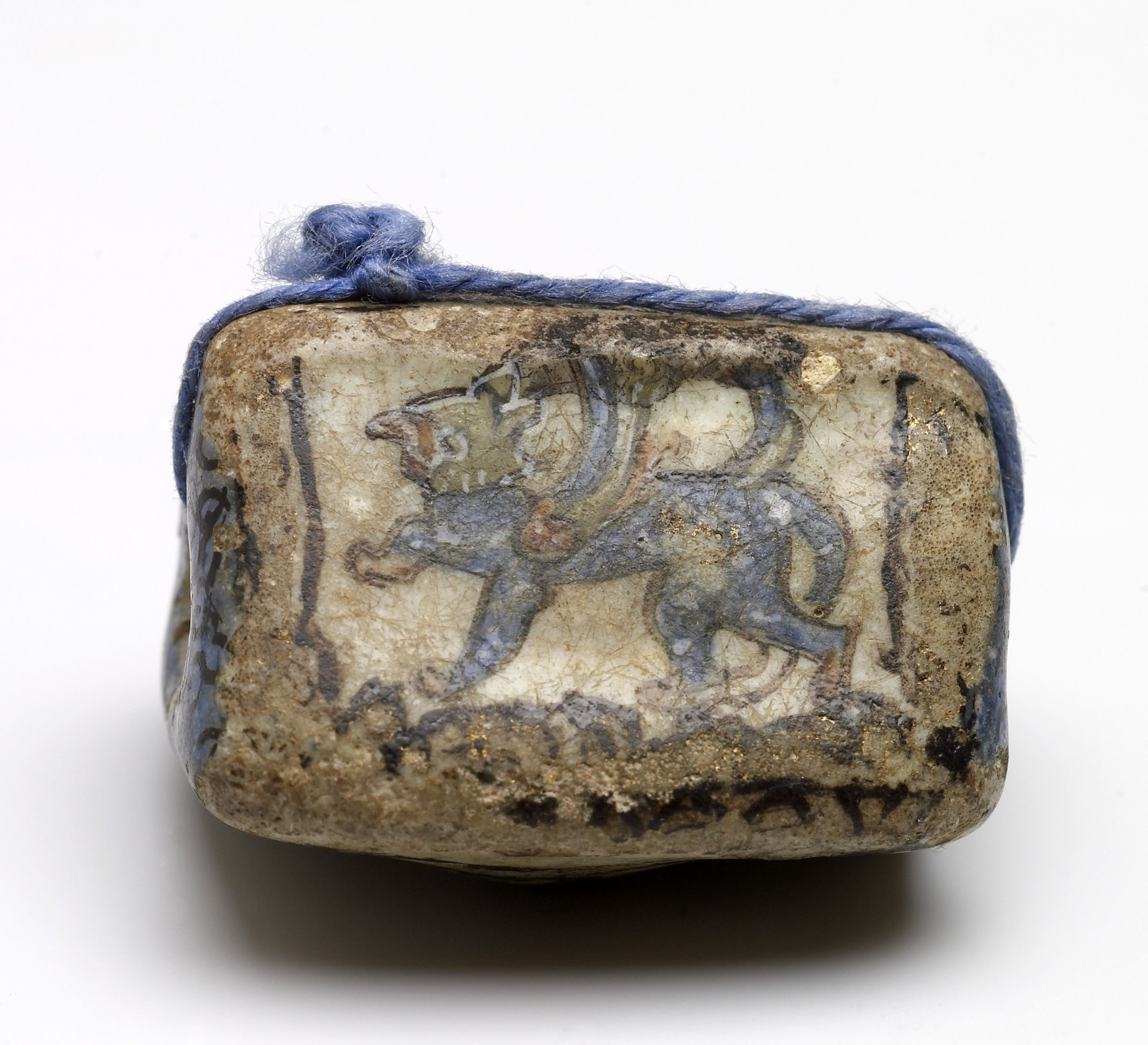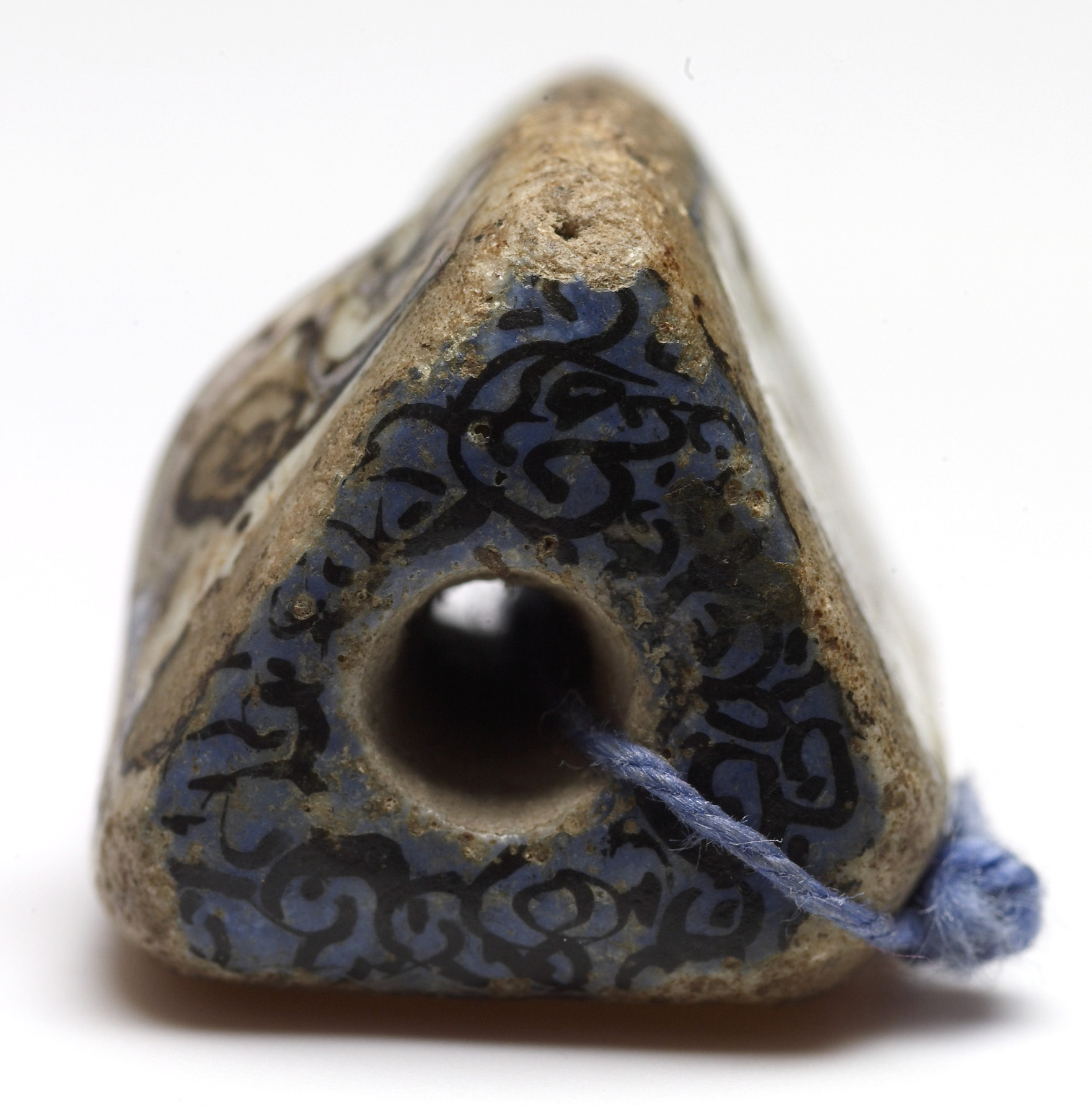Bead with Hybrid Animals
Mina’i is a modern collectors’ term for ceramics made in Iran during the late 12th to early 13th centuries. The term mina’i, translates as “enamelled” in Persian, designating the colored glass pigments used to paint detailed figural decoration on vessels or tiles, which were then fixed on the ceramic base by multiple firings. The use of a wide range of colors, including turquoise, red, green, purple, and black, also led these types of ceramics to be called by the Persian term “haft rang,” or “seven colors.”
The three rectangular faces of this bead each have a different hybrid animals across its surfaces, and the two triangular sides each have a stylized vine vignette on a blue background.
Provenance
Provenance (from the French provenir, 'to come from/forth') is the chronology of the ownership, custody, or location of a historical object. Learn more about provenance at the Walters.
Ex-Coll.: Joseph Brummer, 1941
Conservation
| Date | Description | Narrative |
|---|---|---|
| 7/23/1959 | Treatment | cleaned |
Geographies
Iran (Place of Origin)
Measurements
H: 11/16 × W: 13/16 × L: 1 1/16 in. (1.8 × 2 × 2.7 cm)
Credit Line
Museum purchase, 1941
Location in Museum
Not on view
Accession Number
In libraries, galleries, museums, and archives, an accession number is a unique identifier assigned to each object in the collection.
In libraries, galleries, museums, and archives, an accession number is a unique identifier assigned to each object in the collection.
48.1811












